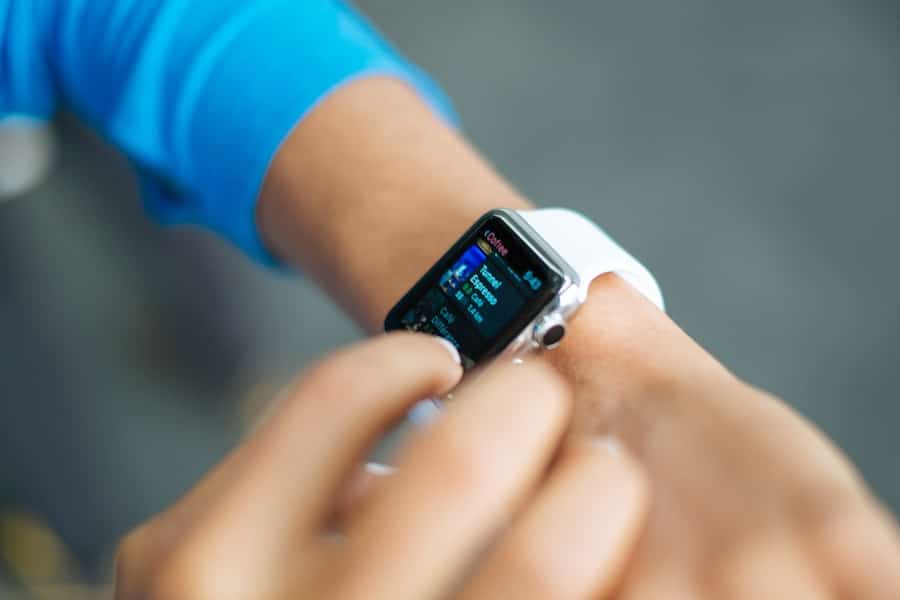The advent of wearable technology has revolutionized various sectors, with healthcare being one of the most significantly impacted. Devices such as smartwatches, fitness trackers, and health monitors have transitioned from mere consumer gadgets to essential tools in the medical field. The rise of these technologies can be attributed to several factors, including advancements in sensor technology, increased smartphone penetration, and a growing consumer demand for health and wellness solutions.
As individuals become more health-conscious, the integration of wearables into daily life has surged, leading to a paradigm shift in how health data is monitored and managed. Wearable technology in healthcare encompasses a wide range of devices that can track vital signs, physical activity, sleep patterns, and even chronic disease management. For instance, devices like the Apple Watch and Fitbit not only monitor heart rates and steps but also provide insights into overall health trends.
This shift towards proactive health management has encouraged patients to take charge of their well-being, fostering a culture of self-monitoring and accountability. As a result, healthcare providers are increasingly recognizing the potential of wearables to enhance patient care and improve health outcomes.
Key Takeaways
- Wearable technology is on the rise in healthcare, offering new opportunities for patient monitoring and engagement.
- Wearables have a significant impact on health data collection, providing real-time insights into patient health and behavior.
- Integrating wearable data with electronic health record (EHR) systems presents challenges related to data accuracy and interoperability.
- Wearables are improving patient engagement and monitoring by enabling continuous tracking of vital signs and activity levels.
- Wearables play a key role in promoting preventive healthcare by empowering individuals to take control of their health and wellness.
The Impact of Wearables on Health Data Collection
Enhanced Patient Awareness and Timely Interventions
The real-time data collection not only increases patient awareness but also enables timely interventions by healthcare professionals. For instance, continuous glucose monitors (CGMs) allow diabetic patients to track their blood sugar levels throughout the day, providing valuable insights that can lead to better management of their condition.
Identifying Trends and Patterns
Moreover, the data collected from wearables can be aggregated and analyzed to identify trends and patterns that may not be evident through sporadic assessments. This capability is particularly beneficial for managing chronic diseases such as hypertension or heart disease, where fluctuations in vital signs can indicate potential complications.
Data-Driven Decision-Making
By leveraging the power of big data analytics, healthcare providers can develop personalized treatment plans based on comprehensive insights derived from wearable technology. This shift towards data-driven decision-making is paving the way for more effective and tailored healthcare solutions.
The Challenges of Integrating Wearable Data with EHR Systems
Despite the promising potential of wearable technology in healthcare, integrating the data generated by these devices with Electronic Health Record (EHR) systems presents significant challenges. One major hurdle is the lack of standardization in data formats across different wearable devices. Each manufacturer may use proprietary algorithms and data structures, making it difficult for EHR systems to interpret and utilize this information effectively.
This fragmentation can lead to inconsistencies in patient records and hinder the seamless exchange of information between healthcare providers. Another challenge lies in the interoperability of systems. Many EHR platforms are not designed to accommodate the influx of real-time data from wearables, which can overwhelm existing infrastructure.
Additionally, healthcare providers may face difficulties in reconciling wearable data with traditional clinical data, leading to potential discrepancies in patient assessments. To address these challenges, there is a pressing need for collaborative efforts among device manufacturers, software developers, and healthcare organizations to establish common standards and protocols that facilitate smooth integration. Source: National Center for Biotechnology Information
How Wearables Are Improving Patient Engagement and Monitoring
Wearable technology has significantly enhanced patient engagement by empowering individuals to take an active role in their health management. The ability to track personal health metrics fosters a sense of ownership over one’s well-being, encouraging patients to make informed lifestyle choices. For instance, fitness trackers that monitor daily activity levels can motivate users to increase their physical activity, leading to improved overall health outcomes.
This shift towards self-directed care is particularly important in managing chronic conditions where patient adherence to treatment plans is crucial. In addition to promoting engagement, wearables have revolutionized patient monitoring by enabling remote observation of health metrics. Telehealth services have gained traction in recent years, and wearables play a pivotal role in this trend by providing healthcare providers with real-time access to patient data.
For example, remote monitoring solutions for patients with heart conditions can alert physicians to irregular heart rhythms or other concerning changes before they escalate into serious issues. This proactive approach not only enhances patient safety but also reduces the need for frequent in-person visits, thereby alleviating pressure on healthcare systems.
The Role of Wearables in Promoting Preventive Healthcare
Wearable technology is at the forefront of promoting preventive healthcare by facilitating early detection of potential health issues. By continuously monitoring vital signs and other health indicators, wearables can identify anomalies that may signal the onset of diseases before they become critical. For instance, smartwatches equipped with ECG capabilities can detect atrial fibrillation—a condition that increases the risk of stroke—allowing users to seek medical attention promptly.
This early intervention can significantly improve patient outcomes and reduce healthcare costs associated with advanced disease management. Furthermore, wearables contribute to preventive healthcare by encouraging healthier lifestyle choices through gamification and social sharing features. Many fitness trackers incorporate challenges and rewards that motivate users to achieve their fitness goals while fostering a sense of community among users.
This social aspect not only enhances user engagement but also promotes accountability as individuals share their progress with friends or family members.
Overcoming Privacy and Security Concerns with Wearable Data
The Need for Robust Measures
The sensitive nature of health data collected by wearables necessitates robust measures to protect patient information from unauthorized access or breaches. Patients may be hesitant to adopt wearable technology if they perceive risks associated with data privacy, which could hinder the overall effectiveness of these devices in improving health outcomes.
Mitigating Concerns through Transparency and Security
To mitigate these concerns, manufacturers and healthcare organizations must prioritize transparency regarding data usage and implement stringent security protocols. Encryption techniques can safeguard data during transmission and storage, while user consent mechanisms ensure that individuals have control over who accesses their information. Additionally, regulatory frameworks such as HIPAA (Health Insurance Portability and Accountability Act) provide guidelines for protecting patient privacy in healthcare settings.
Fostering Trust through Responsible Data Management
By fostering trust through responsible data management practices, stakeholders can encourage wider adoption of wearable technology while safeguarding patient rights.
The Future of Wearables in EHR Integration
The future of wearable technology in healthcare is poised for significant advancements as integration with EHR systems becomes more sophisticated.
This integration will enable healthcare providers to access comprehensive information at their fingertips, facilitating more informed decision-making during patient encounters.
Moreover, advancements in artificial intelligence (AI) and machine learning will enhance the analytical capabilities of EHR systems when processing wearable data. Predictive analytics could identify at-risk patients based on real-time metrics collected from wearables, enabling proactive interventions tailored to individual needs. As these technologies continue to mature, we may witness a shift towards more personalized medicine where treatment plans are dynamically adjusted based on continuous feedback from wearable devices.
Best Practices for Implementing Wearable Technology in Healthcare Settings
Implementing wearable technology in healthcare settings requires careful planning and consideration to maximize its benefits while minimizing potential pitfalls. One best practice is to involve stakeholders from various disciplines—including clinicians, IT professionals, and patients—in the decision-making process when selecting wearable devices. This collaborative approach ensures that the chosen technology aligns with clinical workflows and meets the needs of both providers and patients.
Training staff on how to effectively utilize wearable technology is another critical component of successful implementation. Healthcare professionals should be equipped with the knowledge necessary to interpret wearable data accurately and integrate it into patient care plans seamlessly. Additionally, establishing clear protocols for data management and security will help mitigate privacy concerns while fostering trust among patients regarding the use of their health information.
In conclusion, as wearable technology continues to evolve within the healthcare landscape, its potential to transform patient care is immense. By addressing challenges related to integration, privacy, and engagement while leveraging best practices for implementation, stakeholders can harness the power of wearables to improve health outcomes and promote a culture of proactive health management.
In a recent article from Wired.com, the focus is on how emerging technologies are shaping the future of healthcare. The article discusses the impact of wearables on health data integration with EHR systems, similar to the topic covered in “How Wearables Are Improving Health Data Integration with EHR Systems.” To learn more about the latest advancements in technology and healthcare, check out the article here.
FAQs
What are wearables?
Wearables are electronic devices that can be worn on the body as accessories or implants. They are designed to collect data about the user’s health and fitness.
What is EHR integration?
EHR integration refers to the process of incorporating data from wearable devices into electronic health record (EHR) systems used by healthcare providers.
How are wearables improving health data integration with EHR systems?
Wearables are improving health data integration with EHR systems by providing real-time data on patients’ health and activity levels, allowing for more comprehensive and accurate health records.
What types of health data can wearables collect?
Wearables can collect a wide range of health data, including heart rate, sleep patterns, physical activity, and even blood glucose levels for individuals with diabetes.
What are the benefits of integrating wearable data with EHR systems?
Integrating wearable data with EHR systems can provide healthcare providers with a more complete picture of a patient’s health, leading to better-informed treatment decisions and improved patient outcomes.
Are there any challenges to integrating wearable data with EHR systems?
Challenges to integrating wearable data with EHR systems include data security and privacy concerns, as well as the need for standardized data formats and interoperability between different devices and EHR systems.



